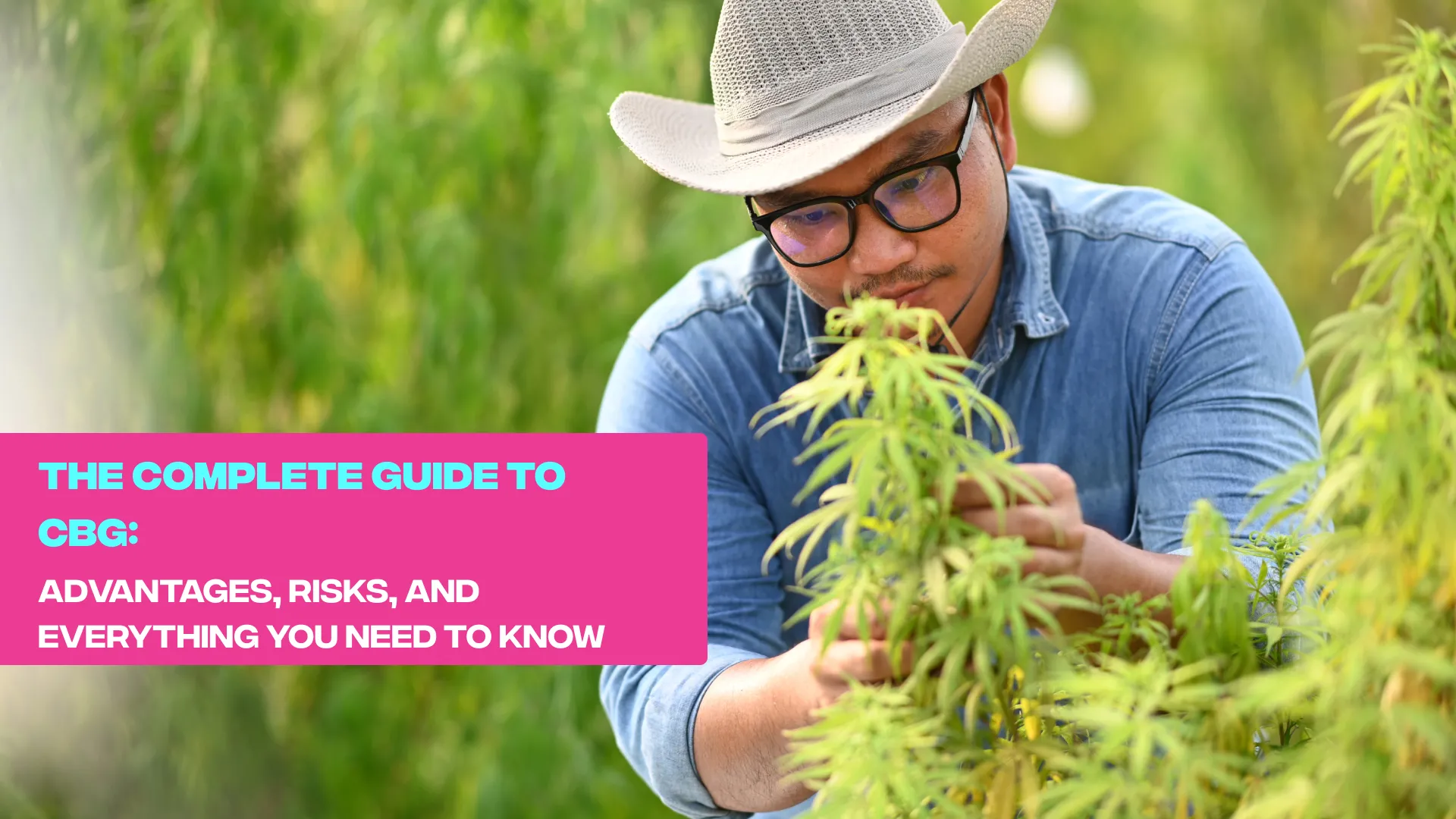There are over 100+ cannabinoids found in cannabis and hemp plants. Some cannabinoids are found in abundant form whereas others are present in trace quantities. CBG is one of those cannabinoids found in trace amounts in cannabis plants. Chances are high that you may have heard about CBD and THC. But have you come across the term CBG? Well, CBG is a lesser-explored cannabinoid that has recently caught up with the hemp market. Even those who are familiar with the term aren’t aware of its potential benefits and usage.
In this blog, we will discover more about this rare cannabinoid which has the potential to be your next SOS. Let’s get started.
What is CBG?
CBG, A minor cannabinoid(group of chemical compounds) exists in relatively lower concentrations in hemp plants. During the early stages of flowering, CBG is present in higher amounts. CBG is often referred to as the mother of cannabinoids because CBG is the precursor of major cannabinoids (THC and CBD). As the plant matures, CBG(cannabigerol) undergoes a fascinating transformation, converting into other popular cannabinoids like THC and CBD. In the flowering phase, mostly cannabis and hemp plants are harvested so there isn’t much CBG left in the hemp plant.
Read More: Is Delta-8 The Same As CBD?
How CBG Works?
CBG is processed by the body’s Endocannabinoid system(ECS), a complex cell-signaling system that plays a crucial role in regulating the body’s various physiological systems including pain, mood, perception, and immune function. There are two types of ECS receptors in our body, CB1 and CB2. CB1 receptors are found in the brain and nervous system, whereas CB2 receptors are found in the immune system of the body. CBG binds both receptors CB1 and CB2 and influences their activity and various physiological processes.
Why CBG is Becoming Popular?
Unlike THC(tetrahydrocannabinol), CBG is a non-intoxicating cannabinoid which means it doesn’t produce a psychoactive ‘high’.
CBG is known for its unique therapeutic properties such as analgesic(pain-relieving), antimicrobial and neuroprotective. Some research says that CBG can interact with other cannabinoids synergistically which can enhance therapeutic effects. Since CBG has various potential health benefits, the market for CBG-rich products is growing including CBG oils, tinctures, vapes, and more. These aspects make CBG more appealing to consumers who are seeking potential health benefits without psychoactive effects.
Potentials Benefits of CBG
With potential therapeutic benefits, CBG promises the treatment of a variety of conditions and ailments. Here are some potential benefits which are based on pre-clinical studies:
- Anti-inflammatory properties: CBG has potential anti-inflammatory and gut motility-modulating effects which may help reduce inflammation in the gut. Since CBG has gut motility-modulating effects it may help in Irritable bowel disease(IBD) and irritable bowel syndrome(IBS).
- Antibacterial and Antifungal properties: CBG possesses antifungal and antibacterial properties which can help in treating bacterial and fungal infections.
- Pain-Relief: CBG may interact with the body’s pain pathways and receptors which can offer potential relief from chronic pain and neuropathic pain.
Read More: Indica Strains For Sleep Disorder
Side Effects of CBG
CBG is considered to be tolerated, but like any other cannabinoid, it may potentially cause side-effects in individuals. However, it’s important to note that the research on its side effects is currently limited. Everyone’s body is unique, and has different levels of sensitivity to cannabinoids. Overdose of CBG may cause side effects in one may not have the same impact on another person. Some common side effects associated with CBG can be dry mouth, drowsiness, and change in appetite. These effects can also vary from person to person.
How to Use CBG?
Like any other cannabinoids, CBG can be consumed in various forms, depending on the availability of the product and personal preference. Here are some common methods to consume CBG:
- Vaping
- CBG Gummies/Edibles
- CBG Tinctures
- CBG Capsules
Difference Between CBD vs CBG?
CBD and CBG are both cannabinoids found in cannabis and hemp plants share many similarities but have some following key differences:
Similarities:
Both cannabinoids act on the body’s endocannabinoid system bind receptors CB1 and CB2 and influence their activity. CBG and CBD both are not psychoactive meaning they don’t produce ‘high’. They can counteract the psychotropic effects produced by THC cannabinoids.
Differences:
- Hemp plants contain up to 25% of CBD whereas only 1% CBG is typically present.
- CBG is still less researched and less studied cannabinoid than CBG.
- CBD products are less expensive than CBG products because it is found in low concentrations in hemp plants.
- CBD and CBG both have overlapping therapeutic benefits, but they may have unique properties. CBG is garnering consumers’ attention for its potential anti-inflammatory, analgesic, neuroprotective, and anti-microbial properties.
Read More: CBD vs CBN vs CBG
Are CBG Products More Expensive Than CBD?
Since CBG is present in trace amounts in cannabis plants, it makes CBG much harder to produce than THC, and CBD. On top of that, CBG shares many similarities with CBD so manufacturers prioritize CBD over CBG. This makes CBG products more expensive than CBD.
Where to Buy CBG Products?
D8 Gas is the perfect place to buy quality cannabinoid products. We carry a wide variety of CBD and hemp products including CBG. We prioritize quality, that’s why we source products from reputable suppliers and manufacturers that follow Good manufacturing practices (GMP). We make sure that every product undergoes third-party lab testing to analyze the safety and purity of the product.

